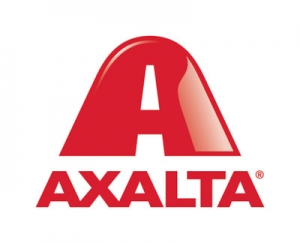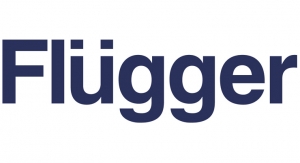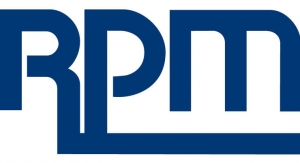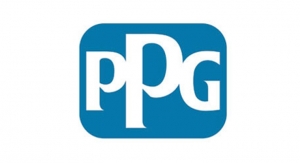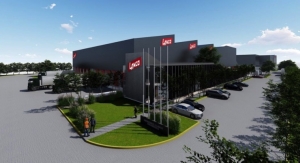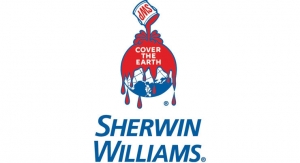Kerry Pianoforte, Editor02.09.21
Tiffany Hua, research associate on the Materials Team at Lux Research spoke to Coatings World on how the pandemic is driving the market for antimicrobial coatings.
CW: How has the COVID-19 pandemic impacted the use of antimicrobial coatings?
Hua: The pandemic has dramatically increased interest and demand for antimicrobial and antiviral coatings. It’s also sparked a wave of innovation – most common antimicrobial coatings, such as those utilizing nanosilver, aren’t effective against viruses or hadn’t been certified as effective against viruses. Innovators are utilizing a wide range of approaches including more conventional biocides, photocatalytic coatings, and novel coatings that trap chlorine or other cleaning agents on a surface to extend their usefulness.
CW: What are the specific applications for these types of coatings (architectural, industrial, etc.)?
Hua: We’ve primarily seen these coatings adopted on high touch surfaces and difficult to clean textiles. High touch surfaces include door handles and elevator buttons in office buildings (Lux’s own office has antimicrobial films); we’ve seen companies like Coca-Cola apply these coatings to vending machines, cities apply them to public transit systems, and of course, they have been used in hospitals as well. Textiles – such as carpets, apparel, and furniture – are a particular concern since they are difficult to clean, so we’ve seen a lot of coatings activity in this space. The first EPA emergency exemption for a novel coating was for a coating used on textile seating in American Airlines planes, to supplement their fogging.
CW: What companies are leading the way with developing new antimicrobial coating technologies?
Hua: We’ve primarily seen small companies leading the way in terms of innovation, though larger players with existing solutions have been trying to roll them out. I’d call out Allied Biosciences, Livingaurd, and HeiQ in textiles; Kastus and NBD Nano in electronics, and PureTi in more general architectural coatings.
CW: Do you think there will be a continued demand for these types of coatings for the foreseeable future?
Hua: We do think that the pandemic will permanently increase demand for these types of coatings. While these coatings are just a supplement to cleaning and social distancing, consumers will become accustomed to their presence in applications like phone cases and buildings and public spaces. I don’t see much appetite for a rollback of deployment in the foreseeable future.
CW: What regions offer the best opportunities for growth?
Hua: I don’t think there’s a strong regional bias or trend; this is an issue that’s largely global. Practically speaking Asia is the largest market for coatings, and I think in particular Southeast Asia will see strong growth – but that’s more due to underlying macroeconomic factors than any particular coating-related reason.
CW: Can you make any predictions on new areas where antimicrobial coatings will be used in the near future?
Hua: These coatings have primarily been used in consumer-facing applications – but I expect that over time they will be used in more industrial and logistics applications. Food prep and meatpacking plants are clear opportunities for antimicrobial coatings, but I also think that there are opportunities to deploy these coatings on disposable packaging. An interesting example is the polybags used in the apparel industry, which protect clothes during transit and are removed before reaching the consumer. You might see coatings applied on these bags to ensure cleanliness and prevent the virus from spreading through the supply chain.
Lux Research provides strategic advice and ongoing intelligence about emerging technologies. For more information go to their website: www.luxresearchinc.com.
Atacamalab: Copper Armour is a metallic copper coating that is applied in a liquid state at room temperature forming antimicrobial, virucidal and auto sanitizing surfaces in floors, walls, and surfaces that require biosecurity.
Unlike many products that claim to be antimicrobial, Copper Armour has the certifications that prove that this coating, once applied to a certain substrate, maintains its qualities over time and throughout its useful life, the company reports. This is mainly due to its patented formulation, which, in very general terms, uses copper particles of certain sizes, densities and shapes in very specific quantities.
Keyland Polymer: Keyland Polymer UV Powders’ newest product offering is UVMax Defender.
UVMax Defender provides added antimicrobial protection for Keyland Polymer’s entire line of UV cured powder coatings.
The antimicrobial agent utilizes silver ion technology to help keep surfaces and products safer. UVMax Defender can be used on plastic, composite, medium-density fiberboard (MDF), wood, and metal substrates and is ideal for healthcare, public transportation, hospitality, education, food service, consumer goods, or other coated products where harmful bacteria can be prevalent.
Corning Incorporated: Corning Incorporated launched a breakthrough in glass-ceramic technology, Corning Guardiant.
Under test methods approved by the U.S. Environmental Protection Agency (EPA), paint and coatings containing Corning Guardiant were shown to kill more than 99.9 percent of SARS-CoV-2, the virus that causes COVID-19.
The tests provide the first demonstration of highly durable antimicrobial activity against SARS-CoV-2. The demonstrated antimicrobial efficacy remained active even after tests simulating six years of scrubbing.
The tests were designed to account for the cleaning that a surface could be subjected to over time. Corning is working alongside PPG as it seeks EPA registration for its paint product formulated with Corning Guardiant.
Subject to EPA approval, PPG’s antiviral paint product will be available under the name COPPER ARMOR.
Prior to making claims in the United States against harmful germs such as SARS-CoV-2, finished products incorporating Corning Guardiant must first be registered with the U.S. EPA.
CW: How has the COVID-19 pandemic impacted the use of antimicrobial coatings?
Hua: The pandemic has dramatically increased interest and demand for antimicrobial and antiviral coatings. It’s also sparked a wave of innovation – most common antimicrobial coatings, such as those utilizing nanosilver, aren’t effective against viruses or hadn’t been certified as effective against viruses. Innovators are utilizing a wide range of approaches including more conventional biocides, photocatalytic coatings, and novel coatings that trap chlorine or other cleaning agents on a surface to extend their usefulness.
CW: What are the specific applications for these types of coatings (architectural, industrial, etc.)?
Hua: We’ve primarily seen these coatings adopted on high touch surfaces and difficult to clean textiles. High touch surfaces include door handles and elevator buttons in office buildings (Lux’s own office has antimicrobial films); we’ve seen companies like Coca-Cola apply these coatings to vending machines, cities apply them to public transit systems, and of course, they have been used in hospitals as well. Textiles – such as carpets, apparel, and furniture – are a particular concern since they are difficult to clean, so we’ve seen a lot of coatings activity in this space. The first EPA emergency exemption for a novel coating was for a coating used on textile seating in American Airlines planes, to supplement their fogging.
CW: What companies are leading the way with developing new antimicrobial coating technologies?
Hua: We’ve primarily seen small companies leading the way in terms of innovation, though larger players with existing solutions have been trying to roll them out. I’d call out Allied Biosciences, Livingaurd, and HeiQ in textiles; Kastus and NBD Nano in electronics, and PureTi in more general architectural coatings.
CW: Do you think there will be a continued demand for these types of coatings for the foreseeable future?
Hua: We do think that the pandemic will permanently increase demand for these types of coatings. While these coatings are just a supplement to cleaning and social distancing, consumers will become accustomed to their presence in applications like phone cases and buildings and public spaces. I don’t see much appetite for a rollback of deployment in the foreseeable future.
CW: What regions offer the best opportunities for growth?
Hua: I don’t think there’s a strong regional bias or trend; this is an issue that’s largely global. Practically speaking Asia is the largest market for coatings, and I think in particular Southeast Asia will see strong growth – but that’s more due to underlying macroeconomic factors than any particular coating-related reason.
CW: Can you make any predictions on new areas where antimicrobial coatings will be used in the near future?
Hua: These coatings have primarily been used in consumer-facing applications – but I expect that over time they will be used in more industrial and logistics applications. Food prep and meatpacking plants are clear opportunities for antimicrobial coatings, but I also think that there are opportunities to deploy these coatings on disposable packaging. An interesting example is the polybags used in the apparel industry, which protect clothes during transit and are removed before reaching the consumer. You might see coatings applied on these bags to ensure cleanliness and prevent the virus from spreading through the supply chain.
Lux Research provides strategic advice and ongoing intelligence about emerging technologies. For more information go to their website: www.luxresearchinc.com.
Atacamalab: Copper Armour is a metallic copper coating that is applied in a liquid state at room temperature forming antimicrobial, virucidal and auto sanitizing surfaces in floors, walls, and surfaces that require biosecurity.
Unlike many products that claim to be antimicrobial, Copper Armour has the certifications that prove that this coating, once applied to a certain substrate, maintains its qualities over time and throughout its useful life, the company reports. This is mainly due to its patented formulation, which, in very general terms, uses copper particles of certain sizes, densities and shapes in very specific quantities.
Keyland Polymer: Keyland Polymer UV Powders’ newest product offering is UVMax Defender.
UVMax Defender provides added antimicrobial protection for Keyland Polymer’s entire line of UV cured powder coatings.
The antimicrobial agent utilizes silver ion technology to help keep surfaces and products safer. UVMax Defender can be used on plastic, composite, medium-density fiberboard (MDF), wood, and metal substrates and is ideal for healthcare, public transportation, hospitality, education, food service, consumer goods, or other coated products where harmful bacteria can be prevalent.
Corning Incorporated: Corning Incorporated launched a breakthrough in glass-ceramic technology, Corning Guardiant.
Under test methods approved by the U.S. Environmental Protection Agency (EPA), paint and coatings containing Corning Guardiant were shown to kill more than 99.9 percent of SARS-CoV-2, the virus that causes COVID-19.
The tests provide the first demonstration of highly durable antimicrobial activity against SARS-CoV-2. The demonstrated antimicrobial efficacy remained active even after tests simulating six years of scrubbing.
The tests were designed to account for the cleaning that a surface could be subjected to over time. Corning is working alongside PPG as it seeks EPA registration for its paint product formulated with Corning Guardiant.
Subject to EPA approval, PPG’s antiviral paint product will be available under the name COPPER ARMOR.
Prior to making claims in the United States against harmful germs such as SARS-CoV-2, finished products incorporating Corning Guardiant must first be registered with the U.S. EPA.





